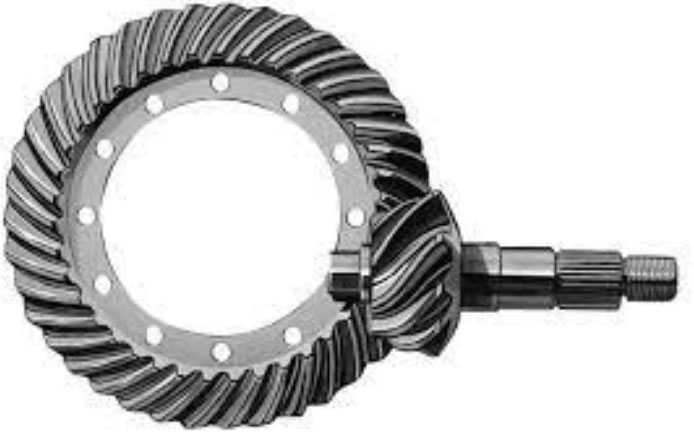
Hypoid gears are a type of gears that offer unique advantages in certain applications. Let’s demystify hypoid gears by exploring their function and applications in this comprehensive guide:
Function of Hypoid Gears:
Hypoid gears are a specific type of spiral bevel gears that have their axes of rotation positioned at an angle to each other. Unlike standard bevel gears where the axes intersect, hypoid gears have non-intersecting axes. This design allows for smooth, efficient power transmission and torque transfer between non-parallel shafts.
The unique tooth geometry of hypoid gears enables a sliding motion between the gear teeth rather than rolling contact. This sliding motion reduces friction and allows for high torque transmission with minimal noise and vibration. Additionally, hypoid gears can handle high gear ratios, making them suitable for applications requiring large speed reductions.
Applications of Hypoid Gears:
Hypoid gears find application in various industries and equipment where their specific advantages are beneficial. Some common applications include:
- Automotive Industry: Hypoid gears are extensively used in automotive applications, particularly in rear-wheel drive vehicles and all-wheel drive systems. They are commonly found in differentials, where they efficiently transmit power from the engine to the wheels while allowing for torque distribution and speed reduction.
- Heavy Equipment and Machinery: Hypoid gears are used in heavy-duty equipment and machinery such as construction machinery, agricultural equipment, mining equipment, and industrial gearboxes. These gears can handle high loads and provide reliable power transmission, making them suitable for demanding applications.
- Power Tools: Hypoid gears are employed in power tools such as angle grinders, circular saws, and electric drills. Their ability to transmit high torque while maintaining smooth operation is crucial in these applications.
- Marine Industry: Hypoid gears are utilized in marine propulsion systems, such as outboard motors and stern drives. These gears provide efficient power transfer from the engine to the propeller while accommodating the non-parallel orientation of the drive shaft and propeller shaft.
- Railway Industry: Hypoid gears are employed in locomotives and railway vehicles, particularly in the drivetrain and axle assemblies. They help transfer power from the engine to the wheels efficiently and handle the varying loads and conditions experienced in railway applications.
- Industrial Gearboxes: Hypoid gears are utilized in various types of industrial gearboxes, including right-angle gearboxes and parallel shaft gearboxes. These gearboxes are employed in a wide range of applications, such as conveyors, mixers, crushers, and other industrial machinery.
It’s important to note that hypoid gears require precise design, manufacturing, and proper lubrication to ensure their optimal performance and longevity. Working with experienced gear manufacturers and considering the specific application requirements is crucial for successful implementation of hypoid gears.
Overall, hypoid gears offer distinct advantages in applications requiring high torque transmission, non-parallel shafts, and efficient power transfer. By understanding their function and applications, engineers can make informed decisions regarding gear selection and maximize the performance and reliability of their systems.
